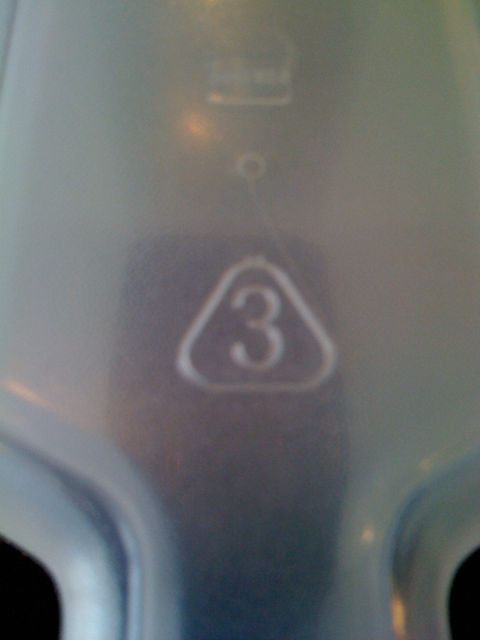By Tania Reuben
The first step towards safer plastics: Eliminate them wherever you can.
This is can be hard, so small changes, one step at a time. Check Out – Diva Guide: Use Less Plastic in Your Home.
Like it or not – plastics are a big part of our lives. How can we navigate their use in the safest manner possible.
Learn to “read” your plastics. Look on the plastic for the little triangle – inside that triange you will see a number.
Avoid plastics numbered: 3 & 6
Know your polycarbonates or number 7 plastics- when in doubt skip it:
The 7 category is the one that all the BPA fuss is about.
There are safe 7’s – they will be labeled “PLA” or “compostable”. In learning more about the number system I was surprised to find that my “tried and true”, nice quality rubbermaid containters are all 3’s – and therefore unsafe!
So now that you know how to pick your plastic – learn the safest way to use them. The manufacturing of plastics involves a variety of petroleum based chemicals. The primary concern with plastics is leaching of toxins into our food and beverages. This risk is increases with heat.
All of the above information does not mean that the number 1,2 & 4 plastics are completely safe. They are manufactured using petroleum products and limiting their use is likely a good idea… which brings us back to the beginning. Eliminate plastic wherever possible!








{ 4 comments… add one }
Ok, what about the hard type of plastic? I don’t know what exactly they call it, I’m talking about the kitchenware set, the one with plates, dishes, trays, etc. What do you say about that?
The plastics that are in the news at the moment are BPA’s.
Are you thinking of Melamine or Acrylic?
My personal choice has been to reduce all my plastic use as much as possible all around. My concern is they will find out more about other plastics down the line. If the plastic is made with a petroleum based product, I think it’s worth minimizing exposure. In the US it’s almost impossible to avoid them all together, so I minimize & avoid where I can.
Dear Tania,
I have a very active 2 year old and I am searching for non-plastic alternatives for cups (not sippy cups and without handles), bowls (small cereal bowl size) and plates that will not break if dropped. Do you have any suggestions?
Many thanks,
Tamara
Check out these products available at amazon:
Thinkbaby BPA Free Feeding Set, Orange
These dishes are tempered glass:
KIDISHES Kid-Friendly Tempered Glass Bowls, Plates and Tumblers
These look great for on the go lunches:
LunchBots Pico Stainless Steel Lunch Container
I’m going to try to get in touch with a few manufacturers and see if we can’t get a giveaway happening too!